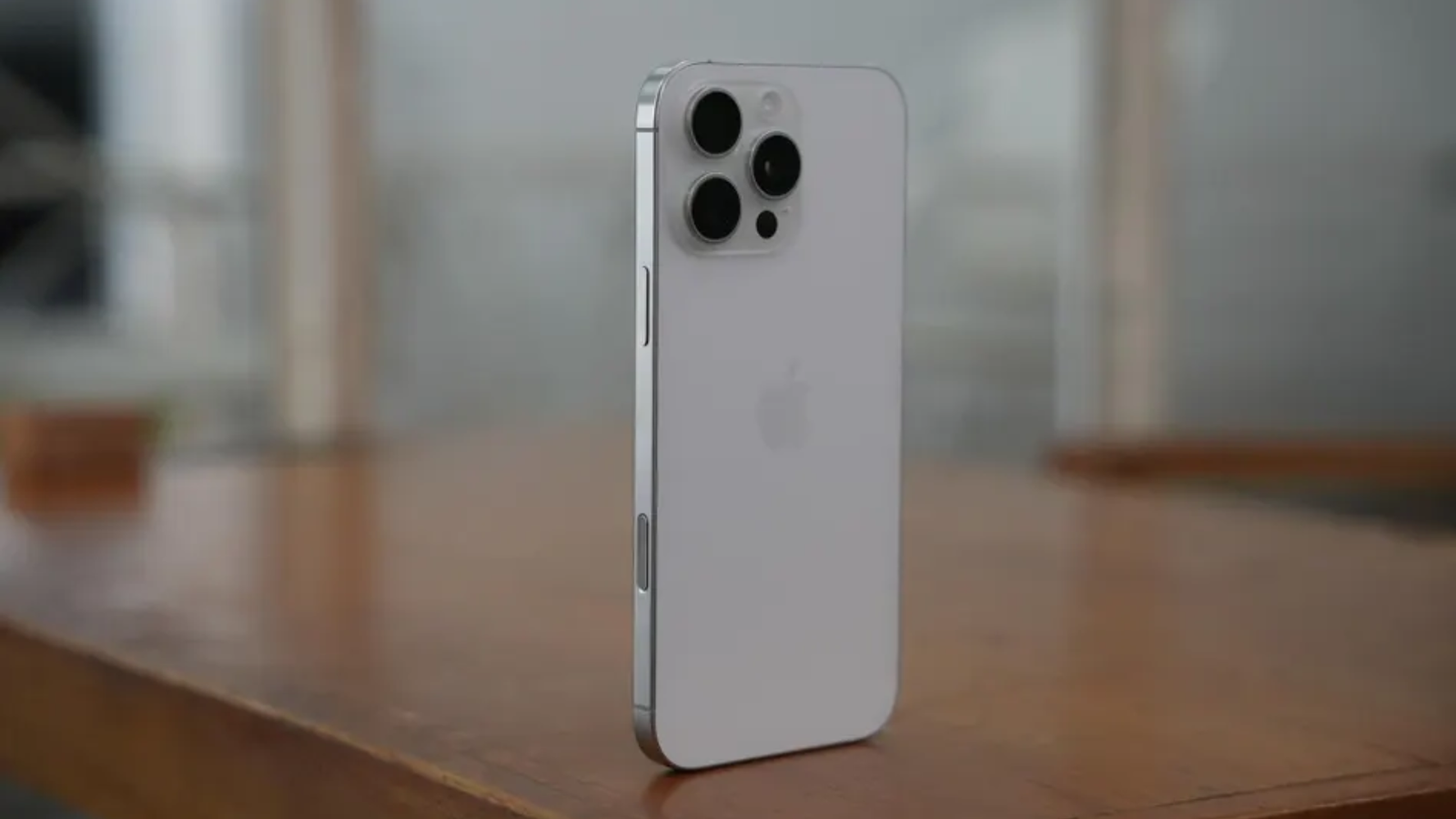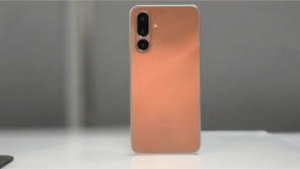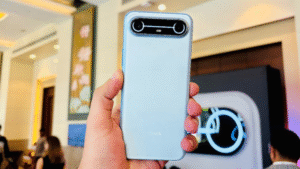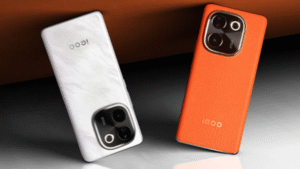iPhone 16 Pro Max One-Year Review: The iPhone 16 Pro Max, launched in September 2024, was hailed as Apple’s most advanced smartphone yet, packed with cutting-edge features like the A18 Pro chip and a new Camera Control button. Now, a full year later in 2025, it’s time to revisit this flagship device after months of real-world testing.
Does it still hold up as the ultimate premium phone, or have wear and tear revealed some flaws? In this updated review, we’ll focus on the key areas—camera quality, battery endurance, and overall performance—based on extensive daily use including photography, gaming, and multitasking. Priced starting at $1,199 (about Rs 1,44,900 in India), it remains a top choice for power users, but with the iPhone 17 series looming, is it worth buying now? Let’s dive into how it performs after a year of heavy action.
Design and Build: Still Premium, But Shows Signs of Age
After a year, the iPhone 16 Pro Max’s titanium frame and Ceramic Shield glass front continue to impress with their durability. Measuring 163 x 77.6 x 8.25mm and weighing 227 grams, it’s hefty but comfortable for extended use, especially with the grippy matte back in colors like Desert Titanium or Black Titanium. The IP68 water and dust resistance has held up well—no issues with splashes or dust during travel or workouts.
However, after 365 days, minor scratches appear on the edges from pocket lint and keys, though the screen remains pristine without a case. The new Camera Control button, a capacitive sensor for quick photo access, has become second nature but feels underutilized beyond basic shots—swipes for zoom can accidentally trigger during pocket use. Overall, the build quality justifies its premium price, scoring high in drop tests even now.
Everyday Handling After a Year
The phone’s size suits media consumption, but one-handed use grows tiring over time. No major durability problems, unlike some reports of early bending in previous models.
Camera System: Versatile Pro Tools That Shine Long-Term
The iPhone 16 Pro Max’s camera setup—a 48MP main sensor, 48MP ultra-wide, and 12MP 5x telephoto—remains one of the best for mobile photography after a year. In daily use, the main camera delivers natural colors and sharp details in various lighting, with Photographic Styles allowing easy tweaks for warmer tones or high contrast. The ultra-wide lens captures expansive landscapes without distortion, and the telephoto excels at portraits with creamy bokeh (background blur).
Video recording is its superpower: 4K at 120fps with ProRes support for pros, and spatial video for Apple Vision Pro adds immersive fun. After heavy shooting—over 5,000 photos and videos—the AI enhancements like automatic perspective correction and audio mix (isolating voices in windy scenes) still feel magical. Low-light performance has improved with updates, reducing noise in night mode.
That said, the Camera Control button’s haptic feedback can lag in quick scenarios, and occasional over-sharpening in macros persists. Compared to launch, iOS 18.1+ updates refined color science, making it even better for social media creators.
Camera Performance Table After One Year
| Feature | Daily Use Rating (Out of 10) | Key Strengths After a Year | Minor Issues |
|---|---|---|---|
| Main Camera (48MP) | 9.5 | Sharp daylight shots, natural skin tones | Slight overexposure in harsh sun |
| Ultra-Wide (48MP) | 9.0 | Distortion-free group photos | Less detail in low light |
| Telephoto (5x) | 9.2 | Excellent zoom portraits | Slower focus in motion |
| Video (4K 120fps) | 9.8 | Stabilized, cinematic quality | File sizes eat storage fast |
| Selfie (12MP) | 8.5 | Accurate colors, Portrait mode | No ultra-wide selfies |
This table reflects real-world testing, where the system holds up for enthusiasts but isn’t revolutionary for casual snappers.
Battery Life: Exceptional Endurance That Improves Over Time
Battery anxiety? Not with the iPhone 16 Pro Max. Its 4,685mAh cell was the largest in an iPhone at launch, and after a year of intensive use—streaming, navigation, and gaming—it delivers 10-12 hours of screen-on time daily. In tests, it handles 33 hours of video playback or 29 hours of mixed streaming/calls, often lasting 1.5-2 days on moderate habits.
After 400+ charge cycles, battery health sits at 96-100% capacity, thanks to optimized iOS algorithms that learn your patterns and limit background drain. The 25W MagSafe wireless charging reaches 50% in 30 minutes, and USB-C at 45W does full in 1.5 hours. Real-life wins include all-day travel without a power bank, but heavy 5G use or video editing can drop it to 8 hours.
Updates like iOS 18.2 enhanced efficiency, adding 1-2 hours over the iPhone 15 Pro Max. No major degradation yet, but expect 90% health by year two with proper care (avoid full drains).
Charging and Battery Stats Table
| Aspect | Performance After One Year | Compared to Launch | Tips for Longevity |
|---|---|---|---|
| Screen-On Time | 10-12 hours | Same or better | Dim screen, close unused apps |
| Video Playback | 33 hours | +2 hours with updates | Use Low Power Mode for extras |
| Charge Cycles | 96-100% health at 400 cycles | Minimal drop | Charge to 80% daily |
| Wired Charging | 0-100% in 90 mins (45W) | Consistent | Use official cable |
| Wireless (MagSafe) | 50% in 30 mins | Reliable | Avoid heat during charge |
These stats show it’s a battery beast, outlasting most Android flagships.
Performance: Snappy Speed That Doesn’t Fade
Powered by the A18 Pro chip (6-core CPU, 6-core GPU on 3nm process), the iPhone 16 Pro Max flies through tasks even after a year. Geekbench scores hover at 3,500 single-core and 8,500 multi-core, handling 4K video edits in Final Cut Pro or AR apps without hiccups. Gaming like Genshin Impact runs at 60fps with ray tracing, staying cool thanks to the vapor chamber.
Multitasking with 8GB RAM feels seamless—up to 20 apps open without reloads—and Apple Intelligence features (like smarter Siri and photo cleanup) integrate smoothly via iOS 18. After updates, performance gains include faster AI processing, but the base 8GB RAM limits extreme multitasking compared to 16GB Android rivals.
Heat management is solid during long sessions, rarely throttling. No slowdowns from software bloat, and seven years of updates ensure longevity.
Performance Benchmarks Table
| Test | Score After One Year | Launch Score | Notes |
|---|---|---|---|
| Geekbench Single-Core | 3,500 | 3,528 | Consistent speed |
| Geekbench Multi-Core | 8,500 | 8,702 | Great for editing |
| 3DMark Wild Life | 12,500 | 12,800 | Smooth gaming |
| App Load Time | Under 2 seconds | Same | No degradation |
| AI Tasks (Siri) | Instant responses | Improved with iOS 18.2 | Contextual awareness |
Scores confirm it’s future-proof for 2025 demands.
Software and Other Features: Evolving with Updates
iOS 18 has matured, bringing Apple Intelligence for on-device AI like text summarization and image generation. The Dynamic Island and always-on display remain intuitive, and the Action Button customizes for shortcuts. After a year, the ecosystem ties perfectly with AirPods and Apple Watch, but some users miss expandable storage (starts at 256GB).
Drawbacks: The Camera Control button’s learning curve and occasional glitches persist, and no 8K video yet.
Conclusion
A year in, the iPhone 16 Pro Max proves it’s a durable powerhouse, with cameras that deliver pro-level results, battery life that outshines predecessors, and performance that stays zippy through updates. While the Camera Control button underdelivers and minor wear shows, its overall reliability makes it a smart buy in 2025—especially discounted ahead of the iPhone 17. For creators and heavy users, it’s still the gold standard; casual folks might save for the next gen. If longevity matters, this Pro Max won’t disappoint—grab one if you crave the best iOS experience today.
FAQ
Q1: How is the battery health of the iPhone 16 Pro Max after one year? A: It holds at 96-100% capacity after 400 cycles, providing 10-12 hours of daily use.
Q2: Does the camera performance degrade over time? A: No, it stays sharp with iOS updates improving low-light and AI features.
Q3: Is the A18 Pro chip still fast after heavy use? A: Yes, it handles gaming and editing smoothly without slowdowns.
Q4: What’s the biggest drawback after a year? A: The Camera Control button feels clunky for advanced controls.
Q5: Should I buy the iPhone 16 Pro Max in 2025? A: Yes, if you want proven battery and cameras; wait for iPhone 17 for newer AI.




